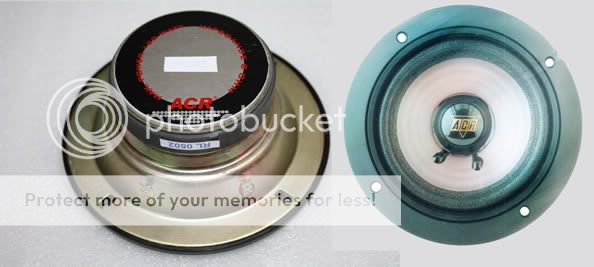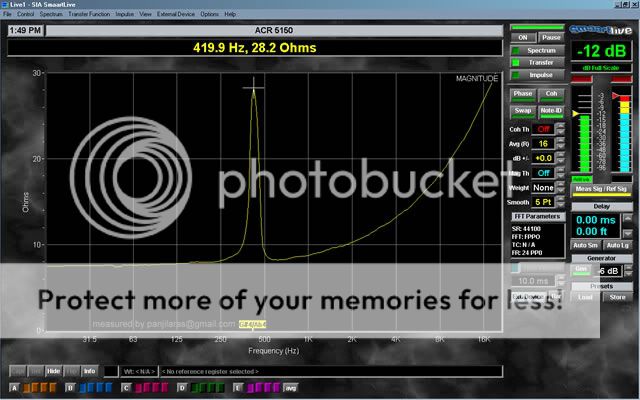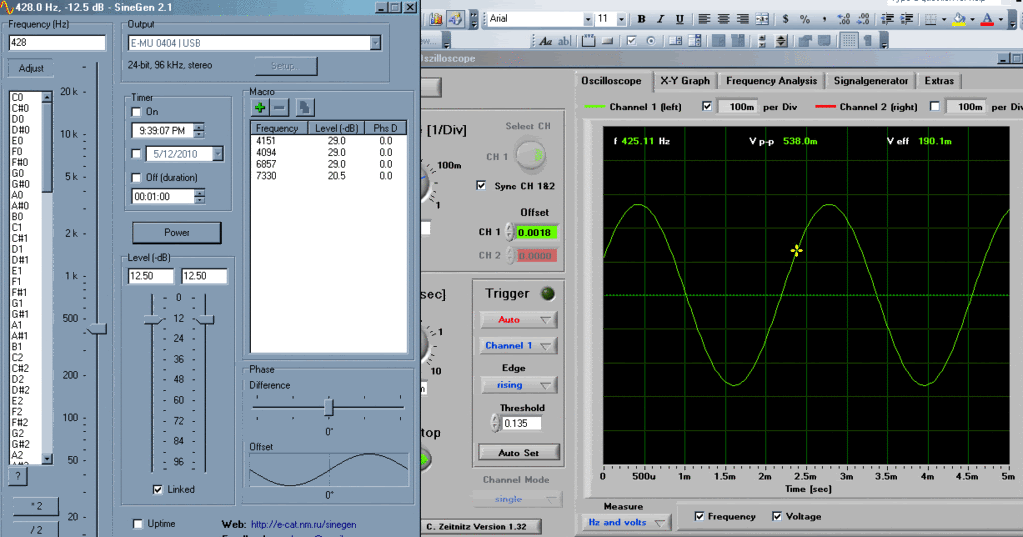Have you guys seen Danleys latest creation?
http://danleysoundlabs.com/pdf/SM%2060F%20spec%20sheet.pdf
It has a 5" coax with unity style entry holes for the midrange. See the patent for details. I guess it is this BMS driver:
Overview
http://danleysoundlabs.com/pdf/SM%2060F%20spec%20sheet.pdf
It has a 5" coax with unity style entry holes for the midrange. See the patent for details. I guess it is this BMS driver:
Overview
Since this is one of the latest theoretical discussions on Unity, I thought is a proper place to discuss this:
CoEntrant Topology and Patent.
Also, where you aware of the 3" midranges from FaitalPro ? Would these be a good choice once sealed?
CoEntrant Topology and Patent.
Also, where you aware of the 3" midranges from FaitalPro ? Would these be a good choice once sealed?
Have you guys seen Danleys latest creation?
http://danleysoundlabs.com/pdf/SM%2060F%20spec%20sheet.pdf
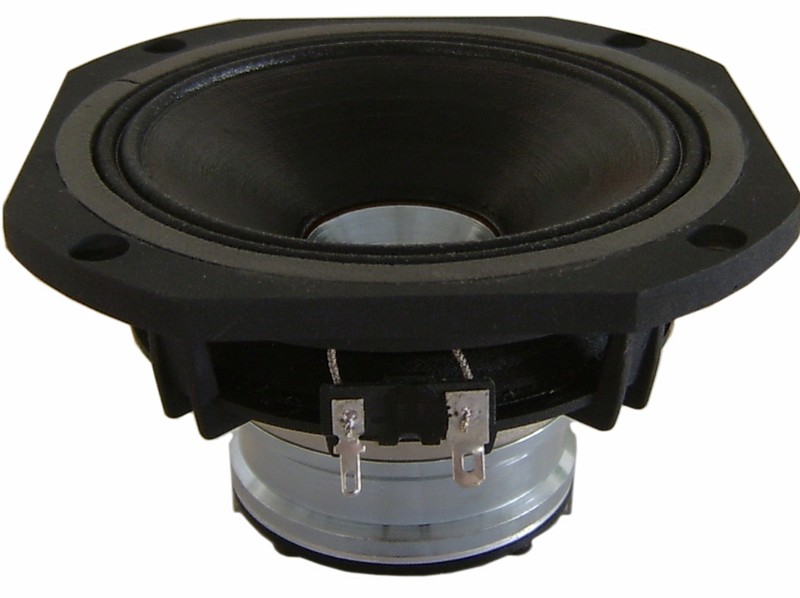
It has a 5" coax with unity style entry holes for the midrange. See the patent for details. I guess it is this BMS driver:
Overview
Wow, I haven't seen anything so infuriating in months
Why didn't I think of that?
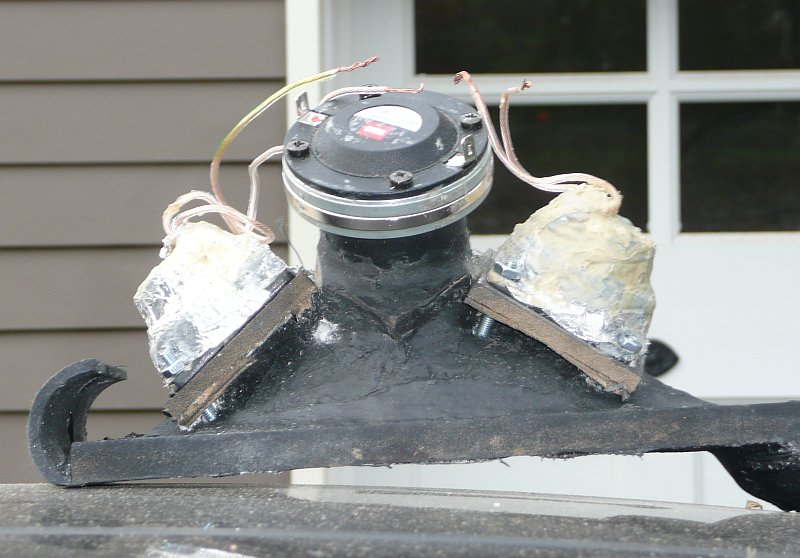
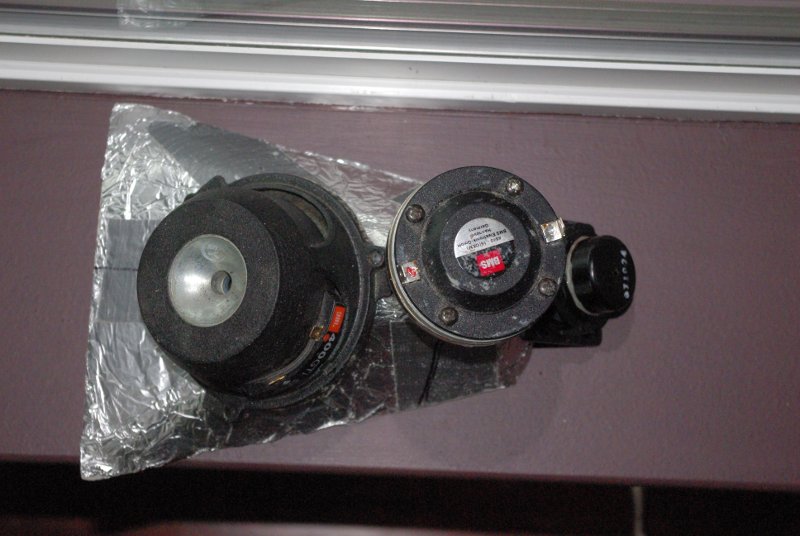
In my Unity horn projects I've traded the big 5" mids of the 'real' Unity horn for 2" models from Tangband, since it shrinks the footprint dramatically. And then I use the dash of my car to extend the horn mouth. (All of my Unities have gone in my car.)
I never even considered using a coaxial at the apex! That's a much easier solution to shrinking the footprint. Looks better too
Greets!
To get 'in the ballpark', find one that either is a closed back unit that resonates at ~SQRT(200*1400) = ~529 Hz, or if open back, then ~529 = 2*Fs/Qes. How you get there doesn't matter if you're not trying to get max efficiency out of it with 'X' diameter x 'Y' long vents. IIRC, TD's prototype driver's published specs were ~2*250 Hz/0.99 = 505 Hz, so I wouldn't get too hung up on the apparent need for a low Qt just because it's a horn app.
GM
Here's a quick rundown of a couple of coaxes.
First off, the BMS 5CN140 which appears to be used in that new synergy horn. Our goal is to pop the values of FS and QES into the equation "2*fs/qes" and find one with a value of 500hz or higher. The higher it is, the higher we can cross the compression driver over. If the value is too low, we get a gap between the midrange and the tweeter. The BMS weighs in at 317. So that's pretty darn low. In my experiments I've found that it's possible to extend the upper frequency limit by carefully manipulating the volume of air under the cone, and the shape of the ports. I'd guess that Danley did the same thing, and extended the response via trial and error.
Assistance Audio doesn't list the BMS on their site right now - if someone wants it, they should give him a call. Jack has been known to do special orders, and has offered drivers that aren't on the site.
I checked out the options from B&C, but the smallest option is 8". At that size, geometry starts to limit your options. The closer you can get them together, the better.
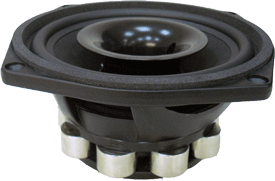
I'm surprised the Beyma works as well as it does. Most of the ones that work well have a paper cone, an accordian surround, and a massive motor. Basically an ultra-light cone and surround married to a powerful motor.
A properly designed coax will do this, sure. The problem is that there are some problems with coaxes that are insurmountable. For instance, the cone of the woofer horn loads the tweeter, but the termination of the tweeter isn't very good, so you end up with frequency response problems.
 A unity horn is basically an array that's folded around a horn, but you already know that. At this point, I cannot tell if the midranges are using horn loading, or tapped horn loading. But it's definitely NOT a direct radiator. The SM-60M has an efficiency of 100dB, whereas the BMS has an efficiency of 91dB. *Something* is loading the midrange, all the way up to 1khz at least.
A unity horn is basically an array that's folded around a horn, but you already know that. At this point, I cannot tell if the midranges are using horn loading, or tapped horn loading. But it's definitely NOT a direct radiator. The SM-60M has an efficiency of 100dB, whereas the BMS has an efficiency of 91dB. *Something* is loading the midrange, all the way up to 1khz at least.
One of the big challenges with a Unity horn is getting the midranges to play high enough; as this thread demonstrates, a lot of woofers run out of steam at 600-800hz on a horn. And the ones that can get up to 1000-1200hz tend to be screamers IMHO. (Due to a lightweight and peaky cone.)
This new Danley horn looks like a really smart solution though. He's replaced the four midrange drivers with a single cone.
The Danley SM-60M illustrates the concept better. It's a two-way, whereas the SM-60F is a three way. The eights have been eliminated.
As an aside, the SM-60F's small footprint makes it very attractive for hifi. I imagine that it's a heck of a lot easier to fit a couple of these in a living room than a SH-60.
[/font]

One of the big challenges with a Unity horn is getting the midranges to play high enough; as this thread demonstrates, a lot of woofers run out of steam at 600-800hz on a horn. And the ones that can get up to 1000-1200hz tend to be screamers IMHO. (Due to a lightweight and peaky cone.)
An externally hosted image should be here but it was not working when we last tested it.
The Danley SM-60M illustrates the concept better. It's a two-way, whereas the SM-60F is a three way. The eights have been eliminated.
As an aside, the SM-60F's small footprint makes it very attractive for hifi. I imagine that it's a heck of a lot easier to fit a couple of these in a living room than a SH-60.
[/font]
Last edited:
Alphalite 6A-CBMR = 546
http://www.parts-express.com/pe/showdetl.cfm?Partnumber=290-682
http://www.parts-express.com/pe/showdetl.cfm?Partnumber=290-682
According to the spec sheet, the SM-60M uses a "synergy horn/tapped horn."
So I'd assumed that the midranges are loaded by a tapped horn.
But based on a cad drawing that someone posted, it looks like that may be a false assumption. This may be a simple coaxial mounted to a conical horn.
[/font]
So I'd assumed that the midranges are loaded by a tapped horn.
But based on a cad drawing that someone posted, it looks like that may be a false assumption. This may be a simple coaxial mounted to a conical horn.
[/font]
According to the spec sheet, the SM-60M uses a "synergy horn/tapped horn."
So I'd assumed that the midranges are loaded by a tapped horn.
But based on a cad drawing that someone posted, it looks like that may be a false assumption. This may be a simple coaxial mounted to a conical horn.
Strike 2! - I was wrong AGAIN.
Attached is a pic. This isn't a conventional coax driving a conical horn, and it's not a tapped horn driving a Unity horn.
An externally hosted image should be here but it was not working when we last tested it.
Here's the CAD drawing. You can see it's a coaxial compression driver with a coupling chamber mounted to the apex of a Unity horn, with a synergy horn feeding it too.
Ow my head hurts
[/font]
You need to see fig. 6 & 7 here to get the full picture.
Sound reproduction with improved ... - Google Patent Search
Sound reproduction with improved ... - Google Patent Search
Cheers!
As you guys are well experienced with unity horn drivers I want to ask you something:
Do you think that the FDB KT410 would be well suited for a unity application?
Unfortunately there are no detailed specs available.
Another questions:
Do you know where in europe to purchase the MCM or Misco unity midrange drivers?
Is anyone experienced with the sealed back chamber drivers from Celestion i.e. TF0410MR and TF0510MR referring to unity horn designs?
(Unfortunately there are no specs available as well)
Thanks in advance!
gzg
As you guys are well experienced with unity horn drivers I want to ask you something:
Do you think that the FDB KT410 would be well suited for a unity application?
An externally hosted image should be here but it was not working when we last tested it.
Unfortunately there are no detailed specs available.
Another questions:
Do you know where in europe to purchase the MCM or Misco unity midrange drivers?
Is anyone experienced with the sealed back chamber drivers from Celestion i.e. TF0410MR and TF0510MR referring to unity horn designs?
(Unfortunately there are no specs available as well)
Thanks in advance!
gzg
Cheers!
As you guys are well experienced with unity horn drivers I want to ask you something:
Do you think that the FDB KT410 would be well suited for a unity application?<snip>
I suspect the Fs is a little bit high on that driver. The Celestion has an Fs around 400Hz. Many of the Danley designs use the TF0410MR. Generally speaking, you can get a little bit more useable output below Fs. The original Unity midranges had an Fs of about 500Hz, but had useable output to 300Hz. That KT410 should be useable down to around 650Hz. However, I'd need more specs to model it before I would put out any cash on it.
Rgs, JLH
This is a really interesting topic! I have such limited understanding of it though.
How do you simulate these unity horns? How does the bandpass function come into play (some mention WinISD, I can't get results like this with it, 1 octave at best)? Who has actually built DIY horns?
I've seen William Cowans project with them and the results looked fantastic, but I have no idea about how to design anything of my own! PA applications seem great too.
I have a spare Dayton RS52 (380Hz fs) and a Monacor SPH-30X (2*105Hz/0.41 = 512)
How do you simulate these unity horns? How does the bandpass function come into play (some mention WinISD, I can't get results like this with it, 1 octave at best)? Who has actually built DIY horns?
I've seen William Cowans project with them and the results looked fantastic, but I have no idea about how to design anything of my own! PA applications seem great too.
I have a spare Dayton RS52 (380Hz fs) and a Monacor SPH-30X (2*105Hz/0.41 = 512)
- Home
- Loudspeakers
- Multi-Way
- Suitable midrange cone, for bandpass mid in Unity horn.
